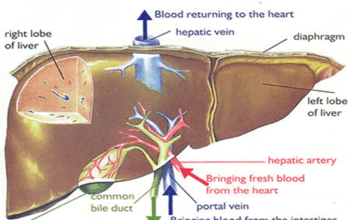Running is more than just a simple form of exercise—it’s a comprehensive body transformation that triggers numerous physiological changes within just 30 minutes. Whether you’re a seasoned athlete or a casual jogger, understanding what happens to your body during a run can help you maximize your fitness routine and overall health.
Immediate Physical Effects: Your Body’s Initial Response
The moment you start running, your body shifts into high gear. Your heart rate begins to climb, typically increasing from a resting rate of around 60-100 beats per minute to 140-180 beats per minute, depending on your fitness level and intensity. This cardiovascular surge serves a critical purpose: delivering more oxygen to your muscles and increasing blood circulation.
Simultaneously, your respiratory system kicks into overdrive. Your breathing becomes deeper and more rapid, dramatically increasing oxygen intake. Lungs expand to their maximum capacity, and your body starts to efficiently exchange carbon dioxide for oxygen. This enhanced respiratory performance is crucial for sustaining your running momentum.
Metabolic Transformations and Energy Systems
Within the first 30 minutes of running, your metabolism experiences a significant boost. The body transitions from using stored glycogen to burning fat as an energy source, which can contribute to weight loss and improved body composition. On average, a 150-pound person can burn approximately 300-400 calories during a 30-minute run, making it an exceptionally efficient workout.
- Calorie Burn: Varies based on running intensity and individual metabolism
- Fat Utilization: Body begins to tap into fat stores for sustained energy
- Metabolic Rate: Remains elevated even after finishing the run
Hormonal and Neurological Changes
Running isn’t just a physical experience—it’s a neurochemical journey. As you run, your body releases endorphins and dopamine, often referred to as “feel-good” hormones. These neurotransmitters create a sense of euphoria, reduce stress, and can even alleviate symptoms of anxiety and depression. The famous “runner’s high” is a real neurological phenomenon resulting from this hormonal cascade.
Simultaneously, your body produces adrenaline, which increases alertness, sharpens focus, and prepares you for peak performance. This hormonal response explains why many runners report feeling more energized and mentally clear after their workout.
Muscular and Physiological Adaptations
During a 30-minute run, your muscles undergo significant stress and adaptation. Muscle fibers experience micro-tears, which, when repaired, lead to increased strength and endurance. Your body temperature rises, causing increased blood flow to muscles and promoting more efficient movement.
Regular running can lead to long-term cardiovascular improvements, including:
- Lower resting heart rate
- Improved heart muscle efficiency
- Enhanced blood vessel elasticity
- Reduced risk of heart disease
Recovery and Post-Run Considerations
The 30 minutes following your run are crucial for recovery. Your body continues burning calories, repairs muscle tissue, and replenishes energy stores. Proper hydration and nutrition during this period can significantly impact your recovery speed and overall fitness progression.
Experts recommend consuming a balanced mix of proteins and carbohydrates within 30-60 minutes post-run to support muscle recovery and replenish glycogen stores. Staying hydrated is equally important, as you may have lost significant fluids through sweat during your run.
Conclusion
A 30-minute run is a powerful catalyst for holistic body transformation. From cardiovascular improvements to mental health benefits, running offers a comprehensive workout that extends far beyond mere physical exercise. By understanding these intricate bodily changes, you can approach running with greater appreciation and intentionality.
Remember, consistency is key. The more regularly you run, the more pronounced and beneficial these physiological adaptations become.






